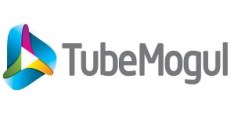Tubemogul cracks down on bots in effort to ‘pass pain back up the supply chain’
Tubemogul is set to crack down on bot and non-human traffic in an attempt to differentiate itself in the market and raise awareness of the growing issue.
The programmatic software company is promising clients who experience traffic that is identified as fraudulent a full refund on their advertising investment.
Tubemogul is set to launch what it calls the ‘non-human traffic credit program’ to platform clients that have a master services agreement (MSA) where it will refund advertisers for non-human activity determined as fraudulent by digital advertising security White Ops.
“I think it is going to have an impact on the ecosystem in general,” Keith Eadie, CMO of TubeMogul told Mumbrella.
“What we are doing is passing the pain back up the supply chain, so it is not just ourselves who will feel the impact from this, it is the wide ecosystem.”
Eadie argues that not enough is being done about the risk of ad fraud where bots and traffic farms can be used to create non-human traffic that sees advertisers charged ads that were not seen by consumers.
“Right now there is a lot of finger-pointing in every direction,” Eadie said. “It’s the advertiser’s responsibility, the publisher’s responsibility, the intermediary’s responsibility where no-one wants to step up and take action around that.
“We wanted to get away from that and that put our money where our mouth is because we are buy-side only and do what is best for brands and agencies we work for.
“We have invested in technology and policies to improve our inventory quality and this is the next step in that effort.”
The senior global Tubemogul executive acknowledged he did not have numbers on the level of bot activity in Australia but noted, globally, it remained a problem.
“I haven’t seen any public-facing studies for Australia,” he said.
“Against overall exchange traffic I have seen studies that point [bot activity] at around 23% of the overall point number, but I have seen anywhere from 15% to 30% as the average range for non-human traffic on broad ad exchanges. It’s an incredibly scary number.
“Our technology takes that down to the low- to middle-single digits,” he said, claiming White Ops’ technology allows the company to view the behaviour of traffic to see it if consistent with bot behaviour.
“We can do this because of the partnerships we have built in Australia and, as a result, everyone is going to have an incentive to focus on the issue and reduce it to a point where no-one is obligated to provide a refund and bot-net traffic is eradicated.
“We are at a point where ensuring that the last few points of fraudulent impressions are a matter of policy for our brands.
“It should have almost no impact to ourselves financially, but should set a stake in the ground for everyone else to set financially.
Eadie said he would be happy to see other tech players in the programmatic space follow suit.
“We would be happy if everyone else followed suit,” he said. “I think it will be a differentiator for us and, on the whole, I think the industry needs to take responsibility for this issue and work to eliminate it.”
Nic Christensen



Interesting move, if they on board quality premium inventory it won’t be an issue. I think the industry would benefit more from them fixing their tech, we know all the publishers have issues with it. Each day lost ad opportunities aggregating to thousands in revenue vanish into the abyss as a result of their tech.